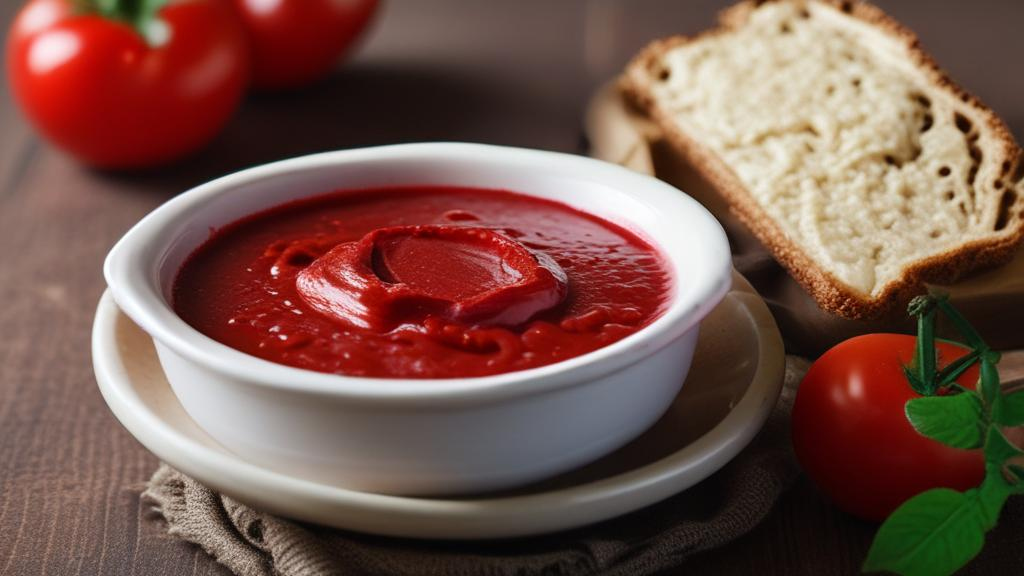
Tomato paste is one of the most important raw materials in the cooking and food industries. Its natural and beautiful color shows the quality and freshness of the product. But sometimes your tomato paste may lose its natural red color, and turn into a less attractive color. In this article, we will examine the causes, and solutions to preserve the natural red color of tomato paste.
If you don’t feel like reading, go down and listen to the audio file:
Buying, selling, and exporting all kinds of tomatoes and tomato paste at very reasonable prices is done in this collection.
Contact us to find out about the status of prices and inventory information, as well as the conditions for buying, exporting, and importing this product in different places.
mehdi sharifi // +989171506174 /// info@ariakala.com
Factors that cause the loss of red color:
oxidation:
- Air and direct light may cause the tomato paste to oxidize, causing it to lose its red color.
- Oxidation is a chemical process in which, as a result of the substance’s contact ,with air and light, air oxygen reacts with organic substances in the product and causes changes in its properties. Oxidation can occur if tomato paste is exposed to direct sunlight or oxygenated air. And this causes the loss of the natural red color and changes in the taste and smell of the product. To prevent oxidation, protective packages can be used, which prevent the product from coming into contact with air and light.
- Also, the use of natural preservatives can reduce this process and preserve the natural color of the product.
Additional heat:
- Adding extra heat to tomato paste may cause it to lose its natural color, especially if the heat process is longer.
- The use of excess heat in the production process of tomato paste can lead to factors that causeunfavorable modifications to the product. For instance, when cooking the product, applying more heat can obliterate the tomatoes’ inherent color and nutrition. Moreover, extending the cooking time may cause the product to lose its intended texture and flavor. Appropriate and controlled cooking techniques can be employed to ensure that the product is cooked to the right temperature without using excessive heat.
- Also, the use of shorter and optimal cooking processes can preserve the natural characteristics and quality of the product.
Use of chemical additives:
- Some chemical additives used in the production process of tomato paste may change the color of the product.
- Some chemical additives used in the production process of tomato paste may change the color of the product. These additives may include preservatives, colorants, acidifiers, or antioxidants.
- For example, adding citric acid to tomato paste can increase shelf life, adjust pH, and maintain its natural color. However, the use of chemical additives requires detailed tests and complete evaluations to ensure that these substances are safe and harmless for human health and that they do not have harmful side effects on the quality and safety of the product. Therefore, the use of chemical additives must be done carefully and in compliance with health standards and relevant regulations.
Solutions and techniques to preserve the red color of tomato paste:

Use of protective packaging: preserving the red color of the paste
- The use of protective packaging can prevent the product from coming into contact with air and light and preserve the color.
- It can be an effective solution to maintain the quality and measurement of food products, including tomato paste.
- Protective packaging usually involves the use of boxes, jars, bottles, or special protective covers. which protect from air, light, moisture, and pollution and prevent chemical and physical changes in the product. for example : Glass bottles or special protective glasses can prevent direct contact of the product with air and light and preserve the natural color and taste of tomato paste. Also, protective packaging can prevent product moisture from changing and the growth of microorganisms that cause product spoilage. In general, the use of protective packaging can maintain the quality and safety of the product and increase its useful life.
Use of natural preservatives: preserving the red color of tomato paste
- Tomato paste can benefit from the use of some natural preservatives, such as citric acid and ascorbic acid (vitamin C).
- Preserving food items, such as tomato paste, with natural preservatives can help preserve their quality and consistency. Natural preservatives and antimicrobials, such as organic acids, fruit extracts, plant extracts, and natural antioxidants, can be derived from either plant or animal source.
- Examples of common natural preservatives that can stop germs from growing and oxidizing in food products are ascorbic acid (vitamin C), tea plant extract, and fruit extracts including lemon, raspberry, and strawberry. Using these organic preservatives can help prevent the negative impacts of chemicals while also preserving the
Production process control: maintaining the red color of tomato paste
- Careful control of the production process, including cooking temperature and time, can help preserve the natural color of the tomato paste.
- Controlling the production process is one of the key factors in maintaining the quality and measurement of food products, including tomato paste. This process includes careful monitoring of all stages of the production process, including the selection of raw materials, preparation and processing, packaging, and storage of products.
- By using advanced equipment and appropriate technologies, product quality can be improved. and ensure that every step of the production process is done correctly. Also, performing various tests and analyses to measure and control important parameters, such as Brix, pH, and color intensity, can help product durability and quality.
- In addition, the creation of standard methods and regular and continuous work protocols can create compliance and develop improved and more reliable processes in the production of products. In general, control of the production process can significantly improve the quality and safety of food products and prevent possible problems.

